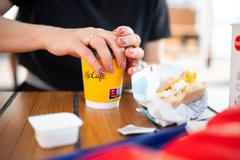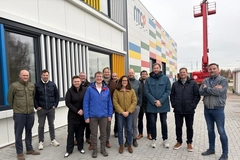South Australia bans soy sauce fish containers, environmentalists demand wider plastic bans

The South Australian (SA) government has banned fish-shaped soy containers in the state’s latest round of single-use plastic bans to reduce marine and terrestrial pollution.
The state has implemented bans on single-use plastics at the start of September each year since 2021, after the introduction of SA’s Single-use and Other Plastic Products (Waste Avoidance) Act 2020.
The SA government says that marine animals and birds mistake fish-shaped soy sauce packaging for food, leading to ingestion, starvation, or injury. The sauce dispensers are also a possible choking hazard and, if littered, can break down into microplastics, contaminating soil and water sources.
Cip Hamilton, plastic campaign manager at the Australian Marine Conservation Society, tells Packaging Insights that while the ban is important, Australian governments should take the next step by regulating plastic production and consumption more widely.
“What our oceans need is for state and federal governments to introduce strong laws that reduce plastic production and consumption and hold businesses accountable for the products they place on shelves. Otherwise, Australia’s marine life and coastlines will continue to suffer under mountains of plastic pollution.”
Other products to be banned this September are single-use plastic cutlery and plastic straws attached to F&B products.
Beyond plastic bans
 The SA government has banned fish-shaped soy sauce packaging to reduce marine pollution.Hamilton argues that bans such as those in SA fall short of the scale of action needed to slash plastic pollution.
The SA government has banned fish-shaped soy sauce packaging to reduce marine pollution.Hamilton argues that bans such as those in SA fall short of the scale of action needed to slash plastic pollution.
While she acknowledges that “banning highly littered single-use plastics helps stop plastic pollution before it even starts,” she stresses that “once plastic enters the environment, it is almost impossible to recover, instead breaking into microplastics, causing harm to marine life and ecosystems.”
Susan Close, the deputy premier of SA, says: “The small size of the fish-shaped soy containers means they’re easily dropped, blown away, or washed into drains, making them a frequent component of beach and street litter.”
Close highlights that in curbside recycling, the soy sauce packaging is too small to be sorted, often ending up in landfills.
However, Hamilton calls for governments to go further in their efforts to curb plastic pollution. “Bans like these are an important small step toward reducing plastic pollution, but governments must start to look at reducing and removing problematic plastics across the whole system.”
Community effort
The ban is supported by the Plastic Free SA program, a regional initiative that aims to help businesses reduce their use of single-use plastics such as straws, coffee cups and lids, takeaway containers, foodware, water bottles, and bags.
Hamilton explains: “There’s no shortage of problematic, excessive, and unnecessary single-use plastics that could be avoided or replaced with reusable or refillable items.”
According to the SA government, 97% of the 3,000 people surveyed for a community consultation on the prohibition, said they supported more single-use plastic bans.
Abby Zhang, owner of Hanamura Norwood, a Japanese restaurant in Norwood, South Australia, says: “We view this ban as a positive step forward for the environment and the food industry, and we are proud to contribute to reducing single-use plastics.”
 Hamilton argues that governments need to introduce strong laws that reduce plastic production.Her restaurant switched from soy sauce fish containers to compostable sauce containers a while ago, a move supported by her customers.
Hamilton argues that governments need to introduce strong laws that reduce plastic production.Her restaurant switched from soy sauce fish containers to compostable sauce containers a while ago, a move supported by her customers.
SA has often pioneered legislation to address the impact of single-use plastic, according to Close. It was the first jurisdiction in Australia to ban single-use plastic shopping bags in 2009.
Close concludes: “South Australians have always been at the forefront of recycling efforts, and they overwhelmingly support banning single-use plastics. Our community consultation has left no doubt that the public expects more action on more items.”











